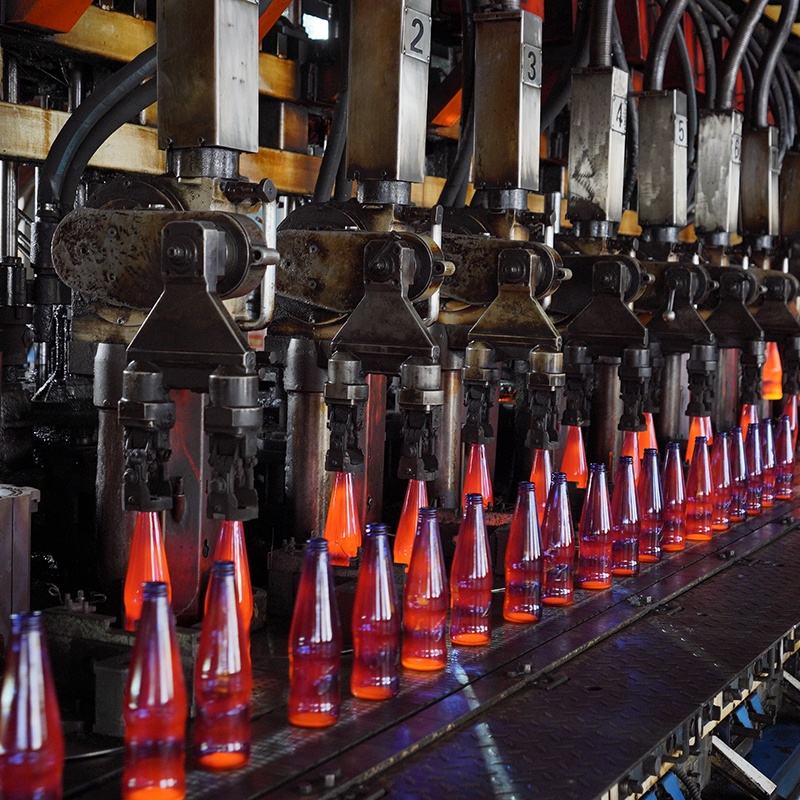Glass bottles are widely used in our daily lives. Some bottles appear clear, smooth, and glossy, while others look dull or slightly rough. What causes these differences? In glass manufacturing, several factors can affect the surface smoothness and overall quality of a glass bottle.
Here are the main factors that influence the smoothness of glass bottles:
1. Improper Entry of the Gob into the Blank Mold
When the glass gob does not accurately enter the blank mold and rubs excessively against the mold wall, folds or wrinkles can form. During the blowing process, these wrinkles expand, creating visible creases on the bottle surface.
2. Excessive Shear Marks from the Feeder
If the feeder shears leave deep marks on the molten glass, these shear scars may appear on the bottle body after forming, reducing surface smoothness.
3. Poor Quality of Mold Material
Low-density or inferior-quality mold materials oxidize rapidly at high temperatures, creating tiny pits or rough textures on the mold surface. These defects are directly transferred to the glass bottle during forming.
4. Low-Quality Mold Lubricating Oil
When the quality of mold oil is poor, lubrication becomes insufficient, reducing gob drop speed and causing uneven gob shape transformation. This results in rough or uneven bottle surfaces.
5. Unreasonable Blank Mold Design
If the blank mold design or plunger size is improper, the gob may not expand evenly during blowing. This can cause dark spots or surface irregularities on the bottle.
6. Uneven Gob Drop Speed or Improper Air Adjustment
If the gob drop speed varies or the air nozzles are incorrectly adjusted, the temperature between the blank mold and the blow mold becomes unbalanced. This leads to cold spots on the bottle body, directly affecting smoothness and gloss.
7. Unclean or Uneven Furnace Conditions
Impurities in the molten glass or uneven glass temperature inside the furnace can cause bubbles, fine grains, or small inclusions, which reduce bottle transparency and smoothness.
8. Improper Machine Speed Adjustment
If the forming machine runs too fast or too slow, the bottle wall thickness becomes inconsistent. This uneven distribution can result in visible streaks or rough areas on the surface.
Conclusion
The smoothness of glass bottles is affected by multiple factors — from gob delivery precision and mold quality to temperature control and equipment settings.
At QLT Glass Products Manufacturing Co., Ltd., we ensure excellent surface quality through:
-
High-precision gob control systems for accurate mold entry.
-
Premium mold materials and lubricants to reduce friction.
-
Stable furnace temperature management for uniform glass flow.
-
Advanced forming equipment to guarantee consistent thickness and surface smoothness.
With our commitment to precision, clarity, and craftsmanship, every QLT glass bottle achieves the perfect balance of strength and shine, helping our clients deliver premium packaging to global markets.
Post time: Sep-30-2025

